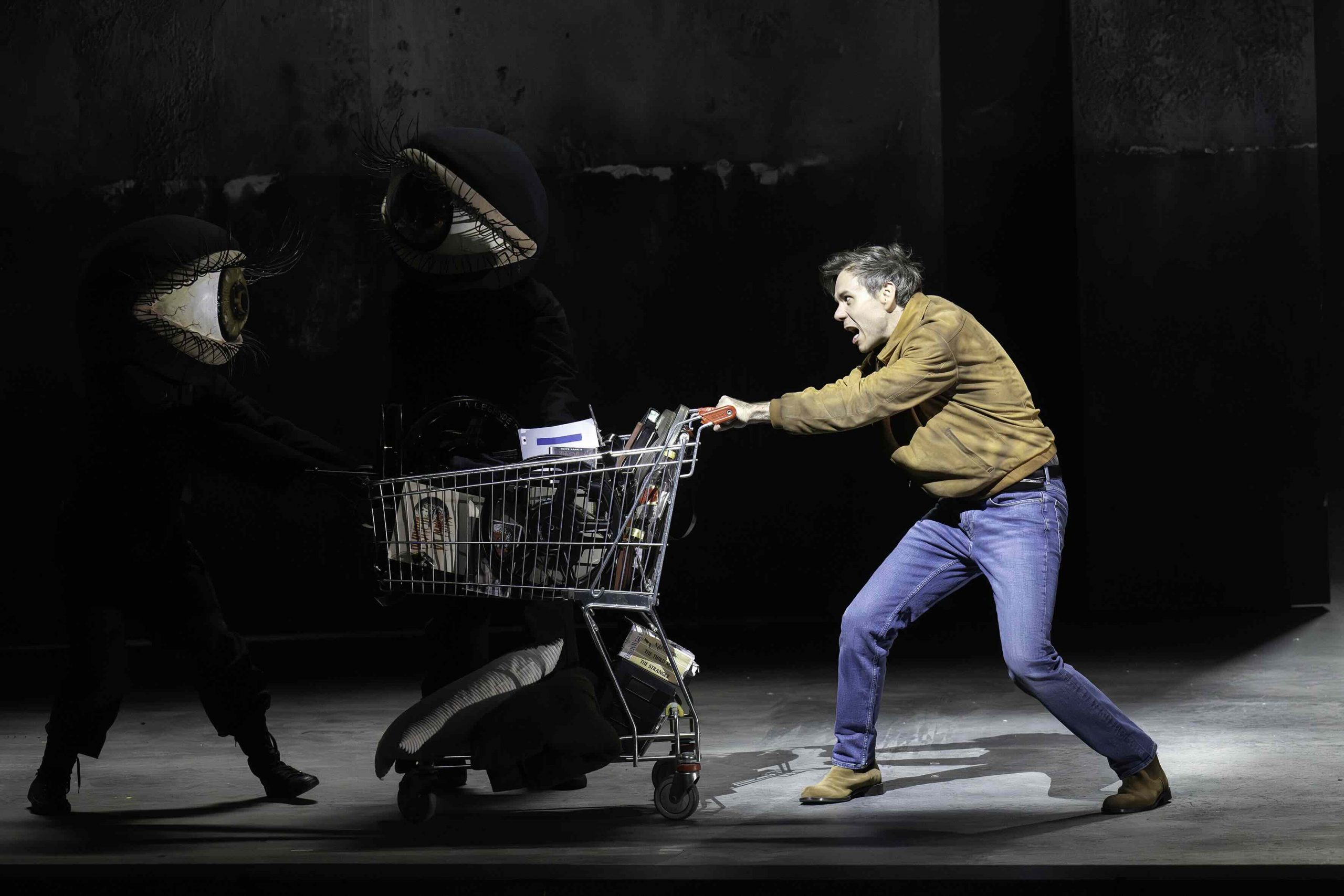
*****
The delight in concept over content marked the approach of French director Mariame Clément to the difficult to stage Tales of Hoffman. Here she decided to make it a drunken, fallen, film director showing reels of his work with women with whom he had disastrously fallen in love. It is ultimately revealed that they are all incarnations of a soprano Stella.
The stories are then told as him directing three films. This enabled a dramatic continuity. The production opens and closes with him as a down and out pushing his shopping trolley of belongings, including a camera and reels of these three films.
Stella and the women who are the stars of each of the stories were all sung by Kathryn Lewek. In each of the stories Lewek excelled, showing that her vocal litheness was matched by dramatical ability.
With such a vast stage at the Grosses Festspielhaus at Salzburg a director can play around. Here we had the stage as a film studio backdrop. This then switched to being the studio spaces for the actual filming.


Cleverly, the chorus scenes were largely film extras in costumes from different movies (cowboys, Romans, baroque aristocrats, spacemen) in meal breaks, rather than at Luther’s Tavern. This is continued with the “Kleinzach” narrative told with a projected storyboard. The studio employees sit down to watch the three stories projected from the film reels Hoffman pushes around his trolley.



Those three stories of Olympia, Antonia and Giulietta were shown as manifestations of the same woman. This was emphasised at the end when Lewek appears wearing parts of all the character’s costumes
The most entertaining was as Olympia, the mechanical doll turned into a chewing gum popping girl who is put into a B movie science fiction film, as aray gun totting sexy starlet. This scene enabled her to show she possesses both a secure, clear coloratura and the ability to delve into the lower register. The other characterisations were less interesting as they continued the story of Hoffmann.
Normally, the Muse/Nicklausse has the task of persuading Hoffman to reject all other forms of love for poetry. Here though Clément has the Muse sung by the honey-voiced mezzo Kate Lindsey actually pairing up with Stella to decide his fate.
Parisian tenor Benjamin Bernheim was ideal for the theatrical concept which required him to transform from a 70s hipster to the contemporary. This was largely achieved through hair and jeans styles! His boy-next door looks, his throwing himself passionately into the role and his bright, appealing lyrical tenor brough this Hoffman to life. It is a role that in this performance showed him at great ease with its vocal demands.
The baritone Christian Van Horn, made for a delicious pantomime baddie as Lindorf/Coppélius/Dr Miracle/Dapertutto. These are all manifestations of Hoffman’s Nemesis. The idea of him stealing the film director’s soul by capturing his image made perfect sense.
However, Clément wanted this to be three tales (and one production) about women being in control. This culminated in the Muse and Stella singing the barcarolle duet as screenwriters having taken over to create the denouement of Hoffman’s tales.
That barcarolle was sensuously played by the Vienna Philharmonic conducted by Marc Minkowski. His adoration for the Offenbach score is evident. Less so was the relationship with his players with some imbalance in the flow of the work.
Main mage: Benjamin Bernheim
Images: Monika Rittershaus
.https://www.salzburgerfestspiele.at/en/tickets/calendar?season=143
Don Giovanni at Salzburg Festival: